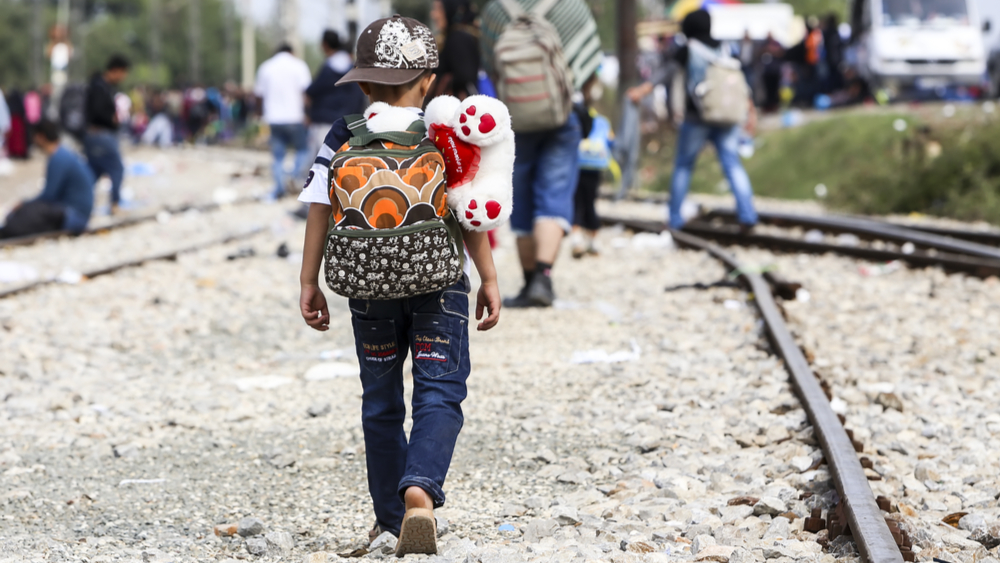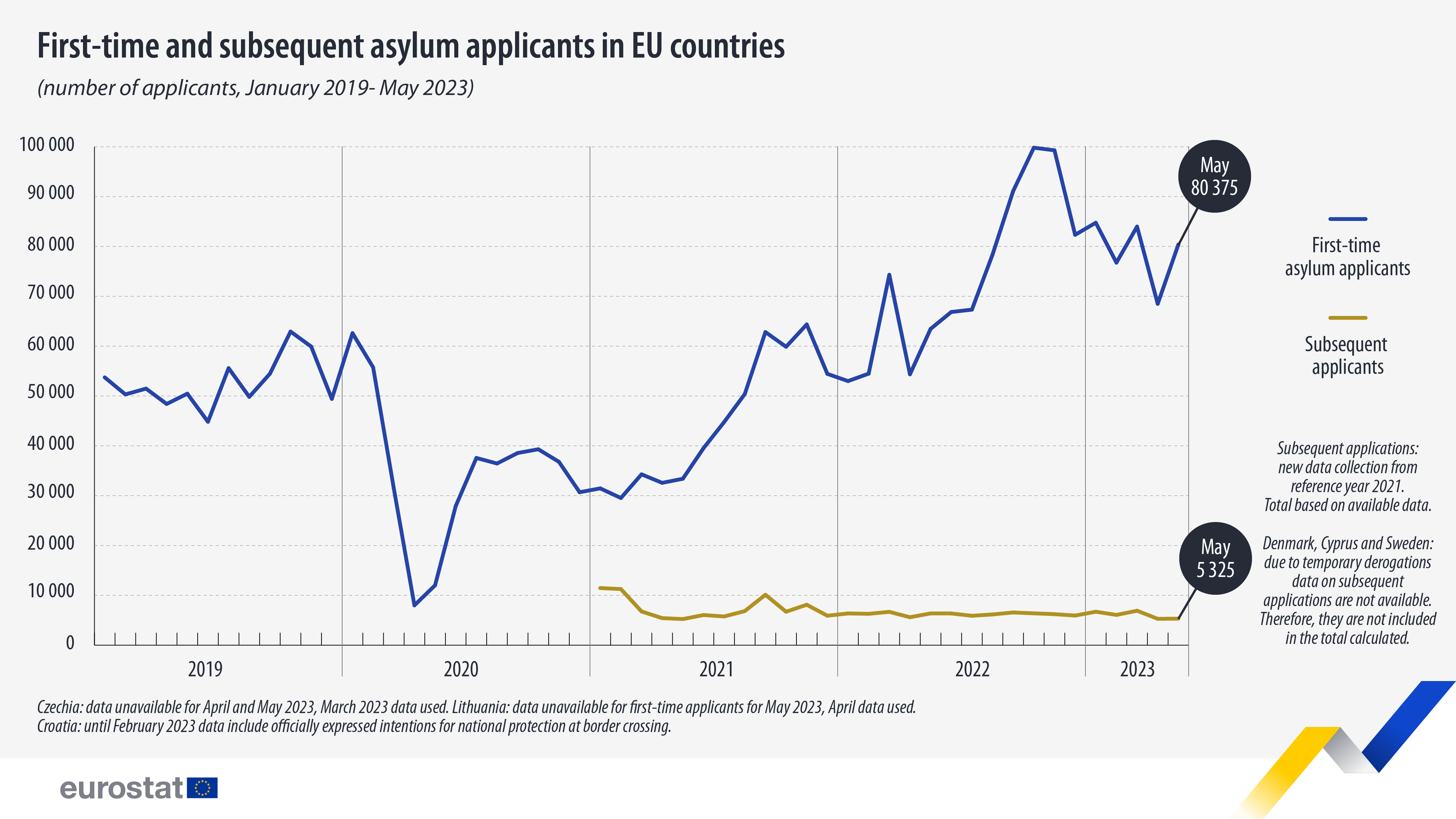Over 80 000 asylum seekers in May 2023

In May 2023, 80 375 first-time asylum applicants (non-EU citizens) applied for international protection in EU countries. Compared with May 2022 (63 455), this represents a 27% increase. There were also 5 325 subsequent applicants, -16% compared with May 2022 (6 370).
This information comes from the monthly asylum data published by Eurostat today. The article presents a handful of findings from the more detailed Statistics Explained article on monthly asylum statistics.
Source dataset: migr_asyappctzm
Most first-time asylum applicants were Syrians and Afghans
As in previous months, in May 2023, Syrians were the largest group of people seeking asylum (12 110 first-time applicants). They were followed by Afghans (7 210), ahead of Venezuelans (7 015) and Colombians (6 745).
Following Russia's military aggression against Ukraine, there was a significant increase in Ukrainian first-time asylum applicants (from 2 100 in February 2022 to 12 185 in March 2022), but the numbers have been decreasing monthly, down to 945 in May 2023. This is also because people fleeing Ukraine benefit from temporary protection.
In May 2023, the number of first-time asylum applicants with Russian citizenship ranked 14th among all citizenships, with 1 435 applications.
Germany, Spain, Italy and France accounted for 78% of first-time asylum applicants
In May 2023, Germany (23 235), Spain (17 405), Italy (11 045) and France (10 850) received the highest number of first-time asylum applicants, accounting for more than three-quarters (78%) of all first-time applicants in the EU.
In May 2023, the EU total of first-time asylum applicants was 179 per million people.
Compared with the population of each EU country (on 1 January 2023), the highest rate of registered first-time applicants in May 2023 was recorded in Cyprus (1 092 applicants per million people), ahead of Austria (448). In contrast, the lowest rate was observed in Hungary (0.2).
3 065 unaccompanied minors applying for asylum
Source dataset: migr_asyumactm
In May 2023, 3 065 unaccompanied minors applied for asylum for the first time in the EU, mostly from Afghanistan (985) and Syria (870).
The EU countries which received the highest number of asylum applications from unaccompanied minors in May 2023 were Germany (1 200), followed by the Netherlands (410) and Austria (405).
For more information
- Statistics Explained article on monthly asylum statistics
- Statistics Explained article on annual asylum statistics
- News article on Ukrainians granted temporary protection in June 2023
- Thematic section on migration and asylum statistics
- Database on asylum statistics
Methodology notes
- As data for first-time asylum applicants were not available for Czechia for April and May 2023, March 2023 data were used.
- Lithuania: data unavailable for first-time applicants for May 2023, April 2023 data used.
- Croatia: until February 2023 data include officially expressed intentions for national protection at border crossing.
- Subsequent applications: new data collection from the reference year 2021. Total based on available data.
- Denmark, Cyprus and Sweden: due to temporary derogations, data on subsequent applications are not available. Therefore, they are not included in the total calculated.
- Data on unaccompanied minor asylum applicants for France are not available.
- Due to temporary derogations, data on unaccompanied minor asylum applicants for Cyprus and Poland are not available. As a result, these Member States were not included in the calculation. A complete list of derogations is provided in the Commission Implementing Decision (EU) 2021/431.
- Data for Croatia cover officially expressed intentions for international protection at border crossing and not only asylum applicants who actually lodged an asylum application. Therefore, current statistics may overestimate the number of applicants. Eurostat is currently discussing improvements of statistics and a revision of data is possible.
- Statistics on asylum applicants considered to be unaccompanied minors presented in the article refer to the age accepted by the national authorities; however, this is before the age assessment procedure is carried out/completed.
- Data presented in this publication are rounded to the nearest five.
If you have any queries, please visit our contact us page.


